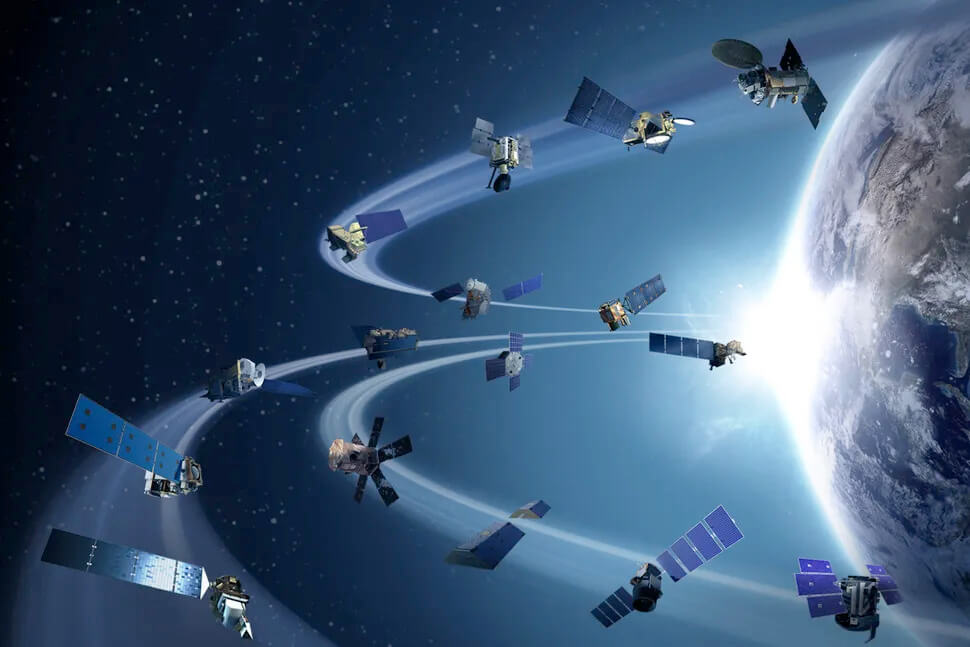Around midday, Earth's ionosphere sometimes experiences sharp, short-lived dips in its electron density—an unusual phenomenon known as a noontime bite-out. A new study takes a global view of these midday disruptions, using finely detailed ionospheric maps to compare their behavior in years of high and low solar activity. The research reveals that noontime bite-outs are more widespread and frequent during solar minimum, especially in winter and at higher latitudes. With detailed tracking of timing, intensity, and duration, the study provides a clearer picture of this elusive phenomenon and offers fresh insights into the daily rhythms of space weather.
The ionosphere is a critical layer of Earth's upper atmosphere that affects radio communications and satellite navigation by reflecting and refracting electromagnetic signals. Among its many behaviors, one stands out for its peculiarity: a sudden midday dip in electron content. These noontime bite-outs, first observed decades ago, can disrupt signals and complicate space weather forecasting. While regional studies have documented the occurrence of bite-outs, their global distribution and causes remain unclear. Due to these uncertainties, there is a growing need to explore their full spatiotemporal characteristics using global, high-resolution datasets.
A research team from Hohai University and Beihang University has published (DOI: 10.1186/s43020-025-00164-x) the most comprehensive analysis to date of ionospheric noontime bite-outs, using five-minute resolution global ionospheric map (GIM) data. The study, released in Satellite Navigation in May 2025, compares bite-out events from 2014 and 2020—years representing solar maximum and minimum, respectively. By scanning latitudes from pole to pole, the team was able to examine how these electron density dips vary with solar activity, season, and geographic location.
The study reveals that noontime bite-outs are significantly more frequent during periods of low solar activity. In 2020, their occurrence extended to wider regions, especially in mid- and high-latitudes, compared to 2014. The team also discovered that winter months consistently show the highest occurrence rates, likely due to lower ionospheric electron content and weaker solar radiation. Using two different intensity metrics—a relative ratio and an absolute value—they showed how bite-outs manifest differently across regions. Most events peaked around 13:00 local time and lasted between 2.5 and 6 hours, with longer durations typically found in summer and during solar maximum years. The underlying causes vary by latitude: near the equator, plasma dynamics such as the fountain effect dominate, while in higher latitudes, poleward winds and neutral atmospheric processes play a larger role. This broad comparison establishes a new benchmark for understanding ionospheric dynamics on a planetary scale.
"This work marks a major advance in our ability to monitor and understand daily ionospheric fluctuations," said Dr. Cheng Wang, senior author of the study. "For the first time, we have a global, time-resolved picture of how noontime bite-outs behave under different solar and seasonal conditions. These findings will be instrumental in future efforts to model space weather and mitigate its effects on navigation and communication systems."
By clarifying when and where noontime bite-outs are likely to occur, the study paves the way for more resilient satellite-based systems. Communications and GNSS signals are particularly vulnerable to sudden ionospheric changes, and predictive models could benefit from this new understanding of midday dips. Moreover, the intensity metrics and global mapping approaches developed here offer tools for future studies on ionospheric variability. As solar activity continues to fluctuate, combining physical models with real-time data could unlock better forecasting tools—helping both scientists and engineers navigate the invisible landscape above.






